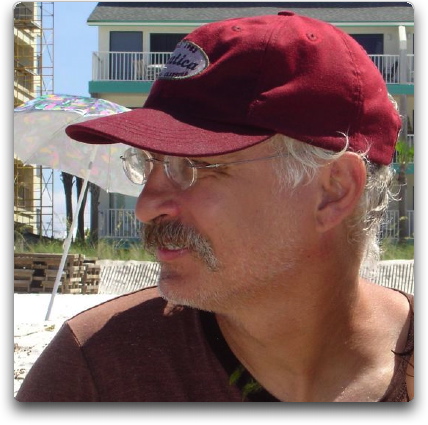In his investigative report with the title "The mark of a masterpiece" published July 12, 2010, in The New Yorker, David Grann informs us about the novel use of methods adopted from forensic science to authenticate works of art. Deception seems intricately interwoven with art. Grann's fascinating story informs us about the scientific method and the power of deceit. It tells us about people who become vulnerable to deception and exploitation on their quest for affirmation of their believe because of pride, ego and money. Establishing the provenance of a masterpiece mainly relies on the subjective expertise to date. However, the desire to discover a new masterpiece by a fabled artist may obfuscate judgment and reason. Definitive objective prove is, therefore, highly sought after.
David Grann portrays the art expert Peter Paul Biro. Biro gained distinction in the world of art for using cutting-edge scientific methods to successfully identify fingerprints of famed masters like Turner, Pollock and Leonardo on hitherto-unknown paintings and drawings. He employs spectral microscopy and computer-supported image analysis to derive his conclusions.
We tend to believe that we are able to establish veracity beyond any doubt with hard data produced by objective machines that do not posses vested interests in the outcome of the examination. However, as David Grann's investigation elegantly reveals, the interpretation of the data may entirely lie in the hands of the investigator. He takes sole responsibility of deciding whether the evidence is sufficient to prove the identity of the fingerprint in question.
Because of our fallibility, more than one expert commonly shoulder such decisions. Peter Paul Biro states that he developed his own imaging equipment, which is one of a kind. No other expert could be asked to verify his findings because they lack the experience with the revolutionary methods he devised. The burden of prove rests with him alone.
This situation puts Biro in a unique position of extraordinary responsibility. The scientific method insists on the reproducibility of findings, preferably by independent examination. Additional verification with different methods may be necessary. Peter Paul Biro is intending to use DNA profiles from hair samples for this purpose. As the only expert in his method, he must know that his career and future depend on his truthfulness. Any scientist's credibility is intimately linked to her/his integrity. Deliberate misrepresentation of evidence is a serious offense, destroying the most highly-respected reputation.
Addenda
- Anyone versed in fluorescence or confocal microscopy could quickly learn how to image fingerprints. You may not even need a microscope. The detective in the video uses a magnifying glass to examine them. A CCD camera with a macrolense on a solid stand will suffice. A a high-quality light source and fiber optics are needed to produce sufficient illumination of the specimen as well as light filters for the wavelengths at which the images need to be captured. For storage and processing we need a computer with frame grabber and software. In total, the equipment may not cost more than $100,000.-. The software for the described image treatment, that is background correction and subtraction, contrast enhancement and erosion to lay bare patterns, alignment and overlay of images as well as subsequent differentiation can be achieved with Wayne Rasband's ImageJ. The application is java-based freeware and can be downloaded from Wayne's National Institutes of Health site. The site also provides helpful information on equipment. For statistical analysis, we could quantify the number of picture elements, also known as pixels, in which the compared fingerprints overlap and use pixel-by-pixel paired t-tests to assess statistical significance as measures of identity. According to Grann, Biro charges $1,000.- per day for his qualitative analyses of fingerprints. His judgment must account for most of the cost (07/22/10).
- Bryony Jones reports in her post with the title "Museum discovers 'new' painting" published online by CNN on Mar. 23, 2012, on an excellent example demonstrating how improved X-ray spectrography helped authenticate a Van Gogh painting previously attributed to an imitator. The painting depicts a still-life of summer flowers exhibited in the Kröller-Müller Museum in Otterlo, the Netherlands. It had been examined with less powerful X-ray methods before, and it was known that there was another composition underneath. Using the new imaging method, experts unambiguously uncovered under the still-life two wrestlers entangled in a match known to have been painted by the famous painter. In addition, the method confirmed that the pigments in the paints were consistent with those used by Van Gogh at the time. Modern technology correctly applied helps (03/24/2012).
- On rare occasions, identification seems straight-forward. The proud new owner of this Renoir rediscovered comments: “One man's trash is another (wo)man's treasure!” (09/12/2012):


